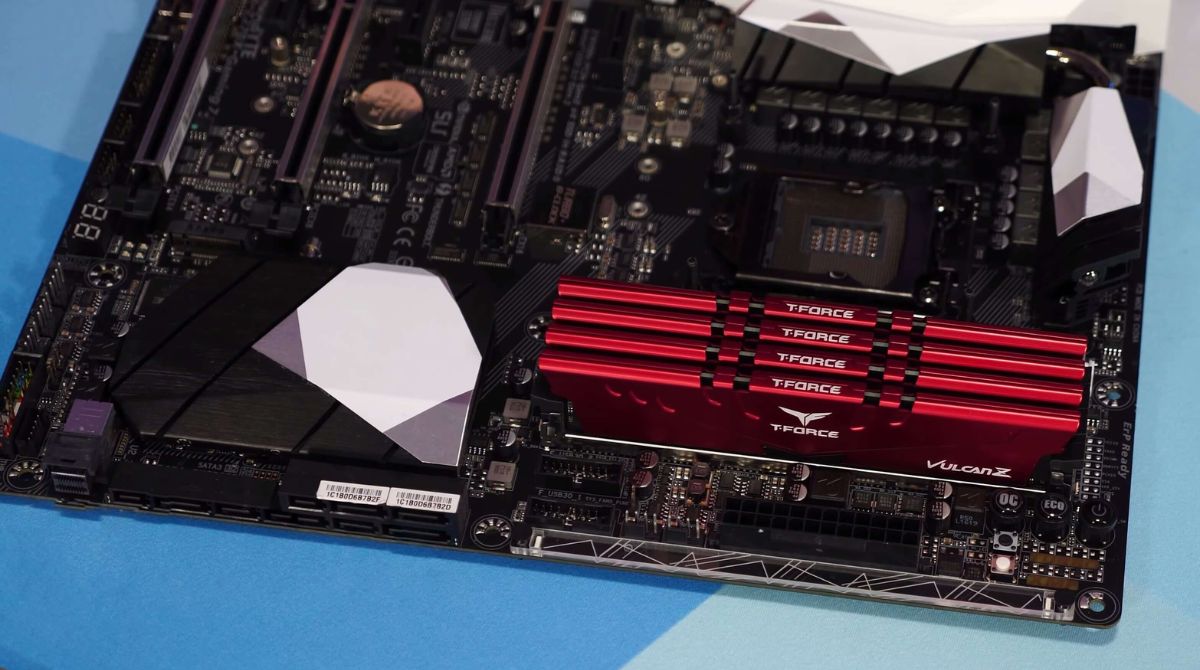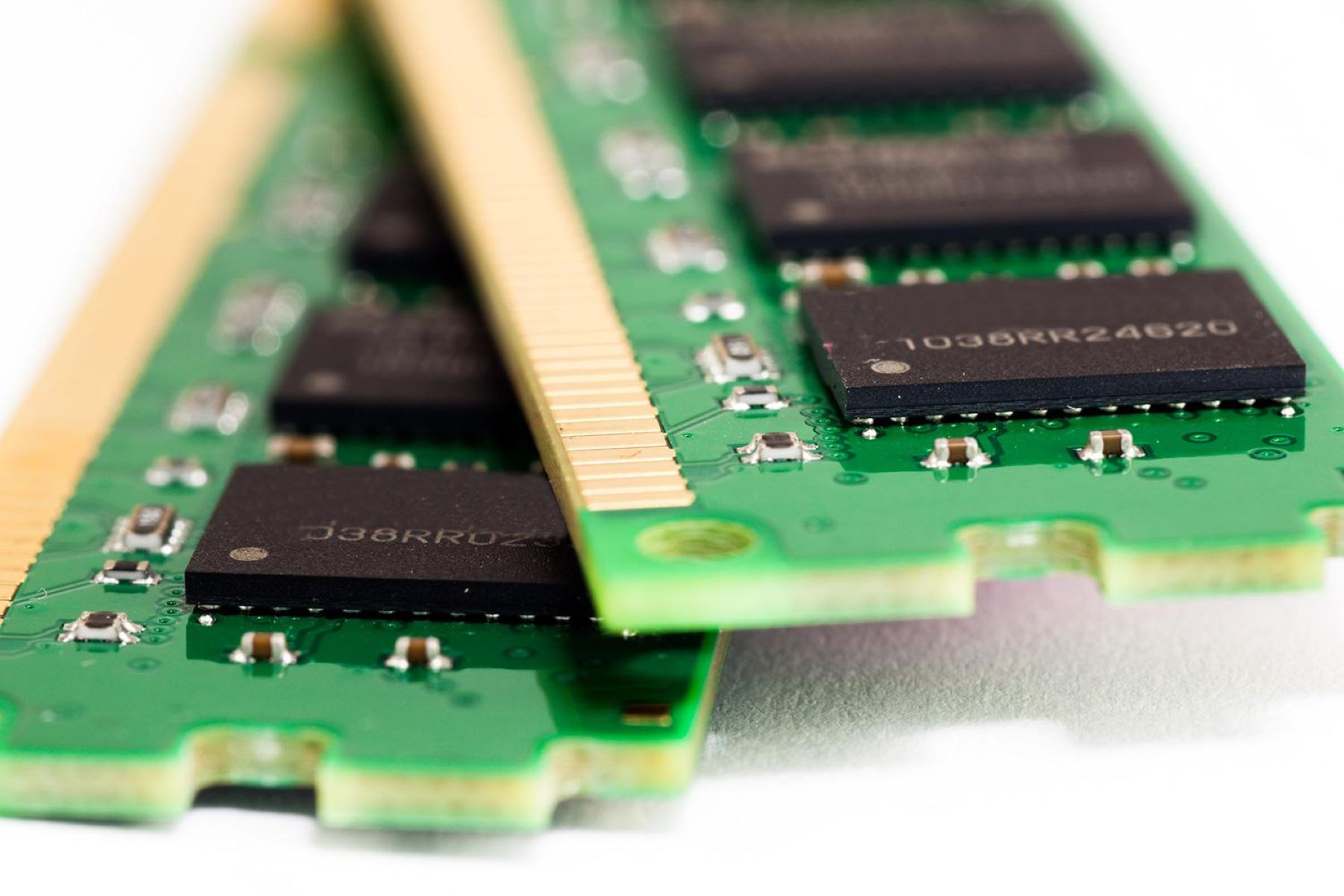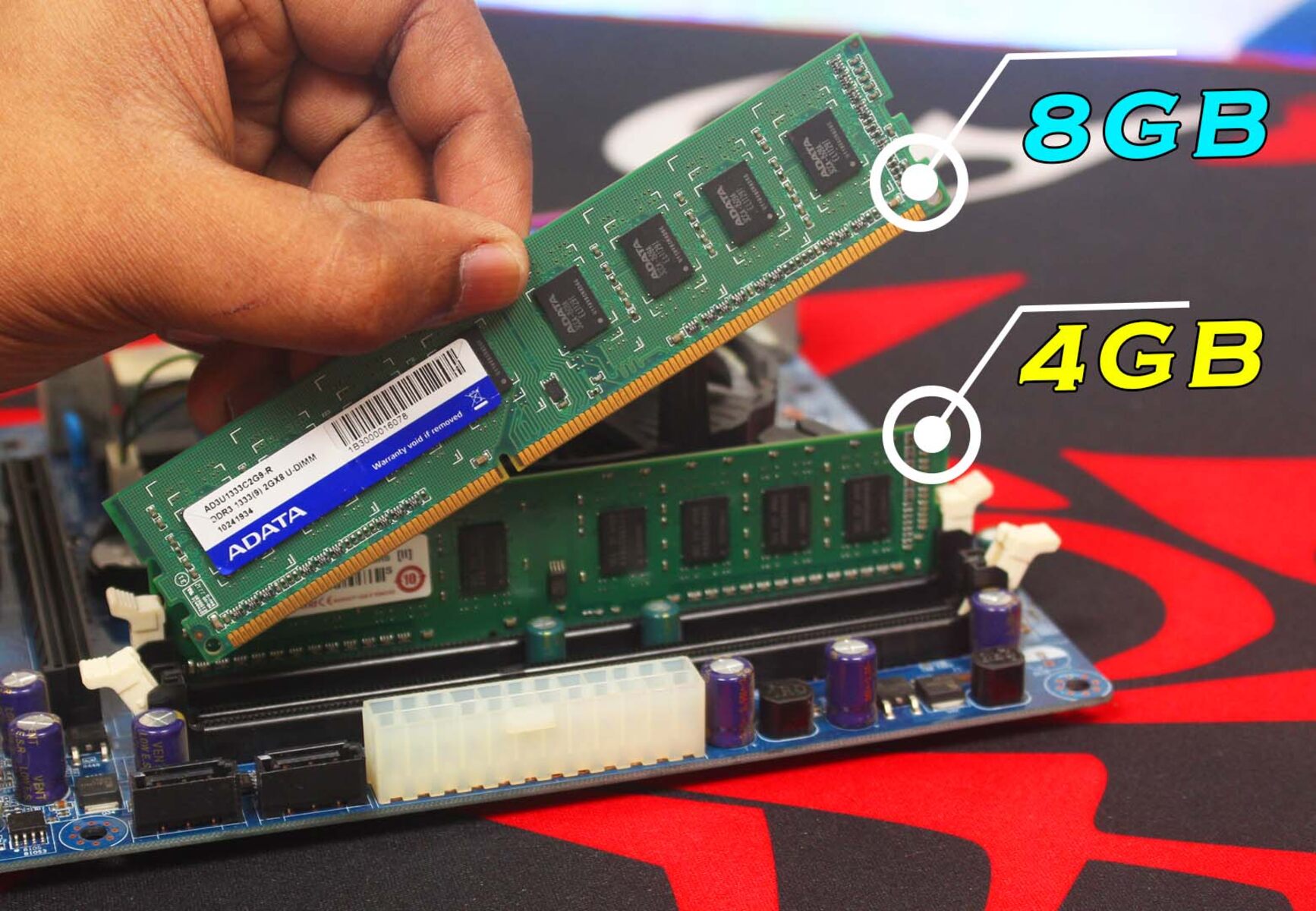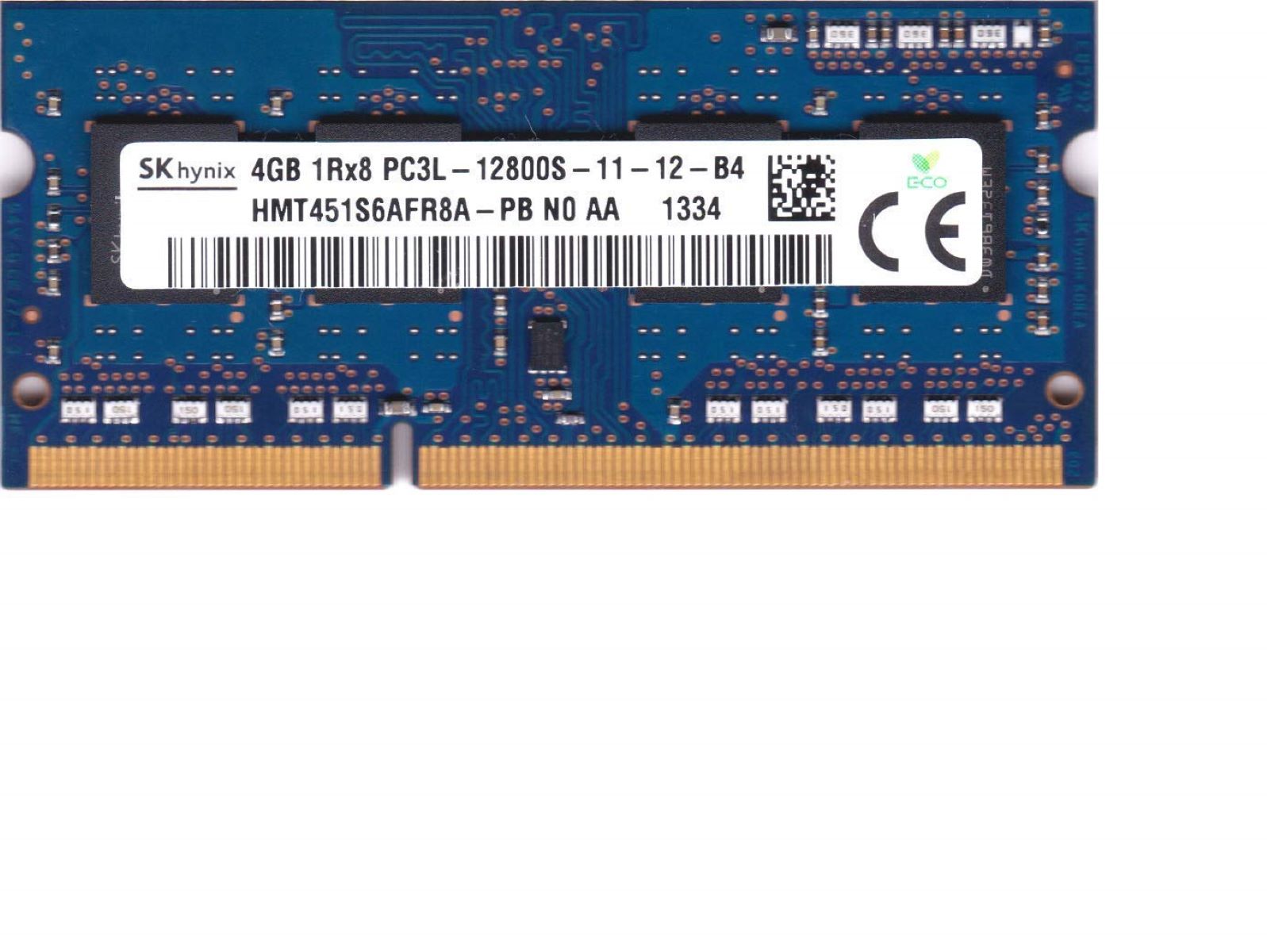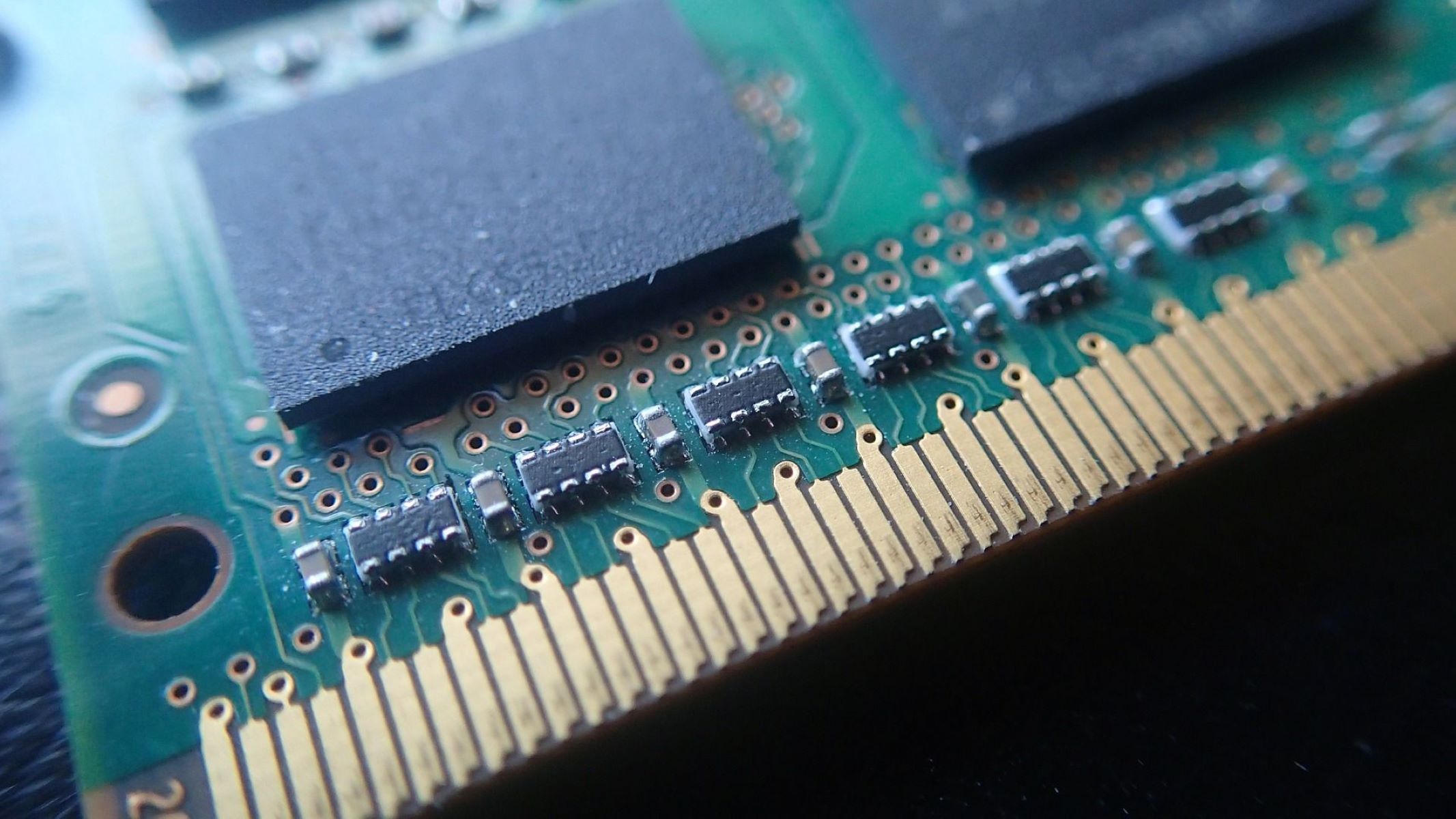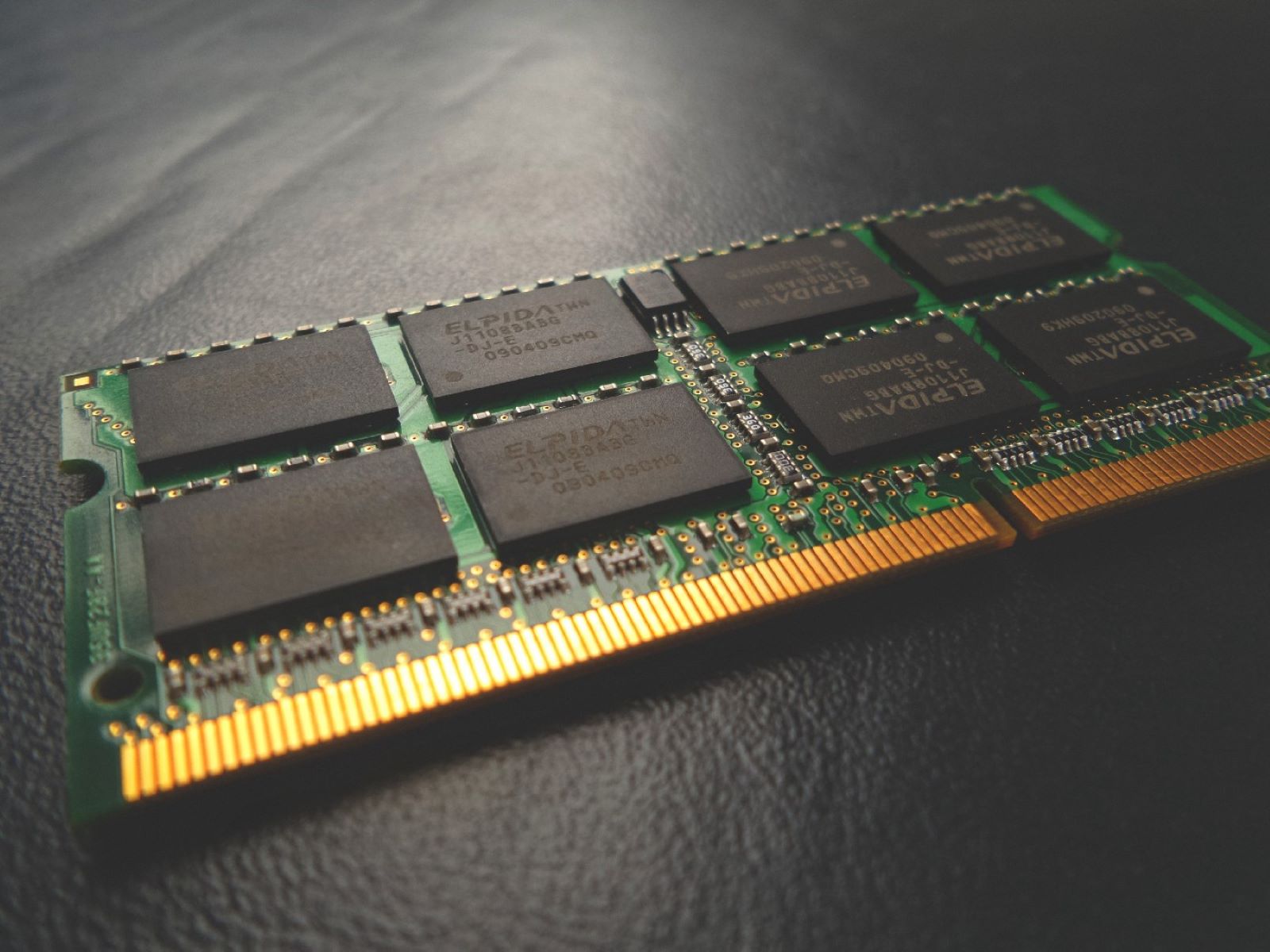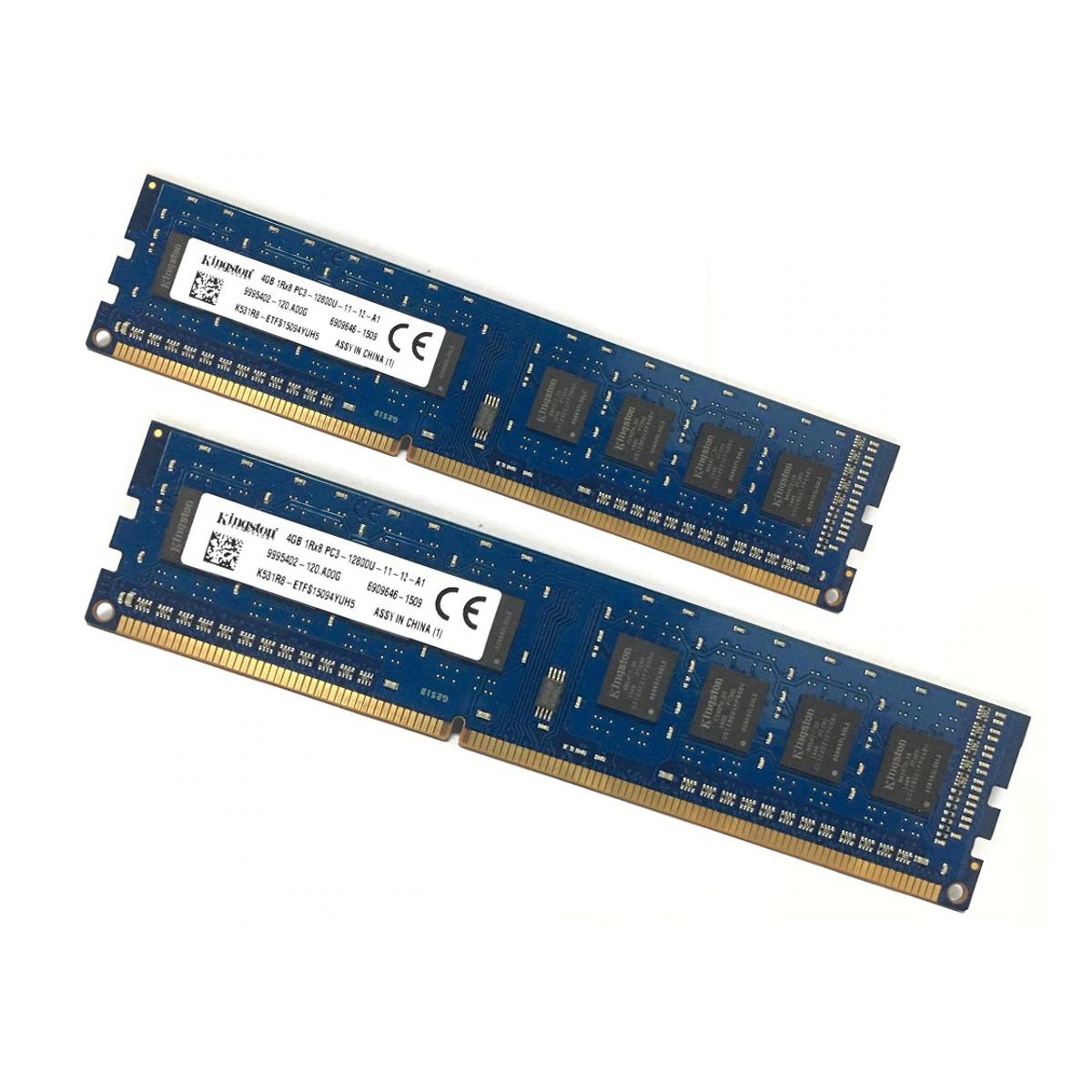Introduction
Welcome to the digital age, where our lives revolve around technology. In this era of smartphones, laptops, and smart devices, we depend on our gadgets for a multitude of tasks. Behind the scenes, one crucial component determines how smoothly our devices operate – RAM, or Random Access Memory. But what exactly is RAM, and what does 4GB of RAM mean for your computing experience?
RAM is a type of volatile memory that allows your device to perform multiple tasks simultaneously. Unlike your device’s permanent storage (such as hard drives or solid-state drives), RAM stores temporary data needed for active programs. The more RAM your device has, the more tasks it can handle efficiently.
When it comes to RAM, 4GB is a common amount of memory found in budget-friendly laptops, entry-level smartphones, and older machines. While it may not be considered a high-end capacity by today’s standards, 4GB of RAM can still deliver a satisfactory computing experience for basic tasks.
In this article, we will explore what exactly 4GB of RAM means for your everyday computing needs. We will delve into various tasks and activities, such as browsing the internet, everyday productivity, light gaming, multimedia consumption, and multitasking, to understand how 4GB of RAM performs in each scenario. Additionally, we will discuss the limitations of 4GB RAM and whether it can keep up with the demands of modern computing.
So, if you’re curious about the capabilities of 4GB of RAM and want to know if it’s enough to meet your needs, join us as we dig deeper into the world of RAM and its impact on your computing experience.
Understanding RAM
Before diving into the specifics of 4GB of RAM, let’s first understand what RAM is and how it functions in your device. As mentioned earlier, RAM stands for Random Access Memory, and it is a crucial component in any computing device.
RAM serves as a temporary storage space for data that your device needs to access quickly. Unlike the permanent storage on your hard drive or SSD, RAM is volatile, meaning it does not retain data when the device is powered off. Instead, RAM provides fast and temporary storage for active programs and operating system tasks.
When you open a program or perform a task on your device, the necessary data is loaded into RAM for immediate access. This allows for faster processing speeds, as the data can be quickly retrieved from memory rather than accessing it from slower storage devices.
Another important aspect of RAM is its capacity. RAM is measured in gigabytes (GB), and the amount of RAM in your device determines how much data can be stored and accessed at any given time. Higher amounts of RAM allow for smoother multitasking and better overall performance.
It’s important to note that RAM is different from permanent storage, such as your hard drive or SSD, which stores data even when the power is off. RAM provides temporary storage that is cleared when the device is shut down or restarted. This is why you may lose unsaved work if your device suddenly shuts down or restarts.
Overall, RAM plays a crucial role in determining the performance and multitasking capabilities of your device. Higher amounts of RAM usually result in improved responsiveness, faster program loading times, and seamless multitasking abilities. Now that we have a basic understanding of RAM, let’s explore what 4GB of RAM means for your computing experience.
What Does 4GB of RAM Mean?
Now that we have a grasp on the importance of RAM, let’s explore what having 4GB of RAM means for your device. While 4GB may not be considered a high-end or top-of-the-line capacity in today’s market, it can still offer a satisfactory computing experience for basic tasks.
With 4GB of RAM, your device has enough memory to handle everyday tasks such as web browsing, word processing, email, and streaming media. These tasks typically have low to medium memory requirements, and 4GB is sufficient to run them smoothly.
However, when it comes to more demanding applications or intensive tasks, 4GB of RAM may start to show its limitations. Resource-intensive activities like video editing, 3D modeling, or running multiple virtual machines can strain the capacity of 4GB, resulting in slower performance, longer load times, and potential lag or freezing.
For light gaming, 4GB of RAM should be able to handle older or less graphically demanding games without much trouble. However, more modern and resource-intensive games may struggle to run smoothly or may require you to compromise on graphics settings to maintain acceptable performance.
It’s worth noting that the RAM capacity alone is not the only factor affecting performance. The efficiency of the operating system, the quality of other hardware components like the processor and graphics card, and the optimization of the software being used also play significant roles.
In summary, 4GB of RAM provides enough memory to handle basic computing tasks without major issues. It is suitable for everyday activities like web browsing, email, and media consumption. However, for more demanding tasks or resource-intensive applications, 4GB may start to show its limitations, leading to slower performance and potential compatibility issues.
Now that we understand what 4GB of RAM means for your device, let’s delve into the specific tasks and activities to assess its performance in each scenario. Whether you’re a casual user, a student, or someone with specific computing needs, knowing how 4GB of RAM performs will help you make an informed decision about your device requirements.
Basic Computing Tasks
When it comes to basic computing tasks, 4GB of RAM is generally sufficient to handle them well. These tasks include web browsing, word processing, email, and other lightweight applications.
With 4GB of RAM, you can expect smooth web browsing experiences, with the ability to have multiple tabs open without significant slowdowns. Basic web-based applications, such as online office suites or email clients, will run without any issues.
Word processing software like Microsoft Word or Google Docs will also work smoothly with 4GB of RAM. You’ll be able to create and edit documents, format text, and perform basic operations without noticeable lag.
Email applications, whether it’s a web-based client or a standalone program like Outlook or Thunderbird, won’t put much strain on 4GB of RAM. You’ll be able to read, compose, and manage your emails efficiently without any notable performance issues.
For basic multimedia tasks like listening to music or watching videos, 4GB of RAM is adequate. Media players and streaming services like Spotify, YouTube, or Netflix will work smoothly, allowing you to enjoy your favorite music or movies without interruptions.
Overall, 4GB of RAM is sufficient for basic computing tasks. Whether it’s browsing the internet, working on documents, managing emails, or enjoying multimedia content, 4GB of RAM will provide a smooth and efficient experience. However, as we explore more demanding tasks and activities, we’ll see how 4GB of RAM can reach its limitations.
Browsing the Internet
Browsing the internet is one of the most common tasks performed on devices with 4GB of RAM. Fortunately, this capacity is generally sufficient to provide a smooth and enjoyable web browsing experience.
With 4GB of RAM, you can open multiple browser tabs without significant slowdowns. This allows you to switch between websites, research topics, or multitask effectively. However, keep in mind that as the number of open tabs increases, the available memory for each tab decreases. If you tend to have numerous tabs open simultaneously or frequently visit resource-intensive websites, you may experience some slowdowns or occasional freezing.
Basic web applications, such as online office suites, email clients, and social media platforms, will run smoothly with 4GB of RAM. You can write and edit documents, compose and manage emails, and browse social media feeds without encountering significant performance issues.
Streaming media content from platforms like YouTube, Netflix, or Spotify is also well-suited to 4GB of RAM. You’ll be able to watch videos, listen to music, and enjoy your favorite content without interruptions or buffering delays.
However, it’s important to note that some websites and web applications may be more resource-intensive than others. Complex websites with heavy animation, embedded videos, or interactive elements may strain 4GB of RAM, resulting in slower page loading times and decreased overall browsing performance.
Additionally, if you frequently use browser extensions or plugins that consume memory, it’s essential to manage them efficiently. Having too many extensions or resource-hungry plugins can eat up RAM, potentially causing performance issues. Being mindful of your browser’s resource usage and disabling unnecessary extensions can help ensure smooth browsing even with 4GB of RAM.
In summary, 4GB of RAM is generally enough to handle web browsing efficiently. You’ll be able to open multiple tabs, use basic web applications, stream media content, and engage in online activities without significant slowdowns. However, resource-intensive websites or excessive use of browser extensions may impact performance, so it’s important to manage them wisely.
Everyday Productivity
When it comes to everyday productivity tasks, 4GB of RAM is generally sufficient to handle them without major issues. Whether you’re working on documents, creating presentations, or organizing your tasks, 4GB of RAM can provide a smooth and efficient experience.
Word processing software like Microsoft Word, Google Docs, or Apple Pages will run seamlessly with 4GB of RAM. You’ll be able to create, edit, and format documents without noticeable lag or performance hiccups. Similarly, presentation software like Microsoft PowerPoint or Google Slides will work well, allowing you to create engaging slideshows and deliver presentations smoothly.
Spreadsheets and data analysis tasks in software like Microsoft Excel or Google Sheets are generally manageable with 4GB of RAM, provided that the files are not too large or complex. Performing basic calculations, creating charts, and organizing data should work without significant performance issues. However, more demanding spreadsheet work, especially with large datasets and complex formulas, may strain the capacity of 4GB RAM.
Task management and note-taking applications like Evernote, OneNote, or Trello should also function well with 4GB of RAM. You’ll be able to create and organize your tasks, take notes, and collaborate with ease.
However, it’s important to be mindful of memory usage, especially when working with multiple productivity applications simultaneously. Running several resource-intensive programs or having numerous files open simultaneously may exceed the capacity of 4GB of RAM. This can result in slower performance, longer load times, and potential lag or freezing.
Overall, for everyday productivity tasks like word processing, creating presentations, managing tasks, and note-taking, 4GB of RAM is generally sufficient. It can handle these tasks smoothly, enabling you to be productive and efficient in your work. However, if you frequently work with large and complex files or utilize resource-intensive software, you may need to consider upgrading to higher RAM capacities for optimal performance.
Light Gaming
If you enjoy casual or light gaming, 4GB of RAM can handle older or less graphically demanding games without significant issues. However, for more modern and resource-intensive games, 4GB of RAM may struggle to provide a smooth gaming experience.
With 4GB of RAM, you can play older titles, simple indie games, and less demanding games without major performance problems. These games typically have lower system requirements and do not consume excessive memory. You should be able to enjoy these games with acceptable frame rates and smooth gameplay.
However, when it comes to more recent and graphically demanding games, 4GB of RAM may not be sufficient. These games often require more memory to load and render complex textures, environments, and character models. Insufficient RAM can lead to longer loading times, reduced frame rates, and potential stuttering or freezing during gameplay.
In addition to limited RAM, other hardware components such as the graphics card and processor also play a significant role in gaming performance. If your device’s graphics card and processor are also outdated or underpowered, it can further hinder gaming performance, even with 4GB of RAM.
It’s important to note that game settings and resolution can also impact performance. Lowering graphics settings and playing at lower resolutions can help alleviate the strain on limited RAM. However, this may result in compromised visual quality.
If you’re a casual gamer or primarily play older or less demanding games, 4GB of RAM should be sufficient. However, if you’re an avid gamer or enjoy playing modern and graphic-intensive titles, it’s recommended to consider upgrading to a device with higher RAM capacity for a smoother and more enjoyable gaming experience.
Multimedia Consumption
When it comes to multimedia consumption, 4GB of RAM can handle most tasks effectively. Whether you’re streaming videos, listening to music, or viewing photos, 4GB of RAM provides sufficient memory for a smooth multimedia experience.
Streaming platforms like YouTube, Netflix, or Hulu will work seamlessly with 4GB of RAM. You’ll be able to watch videos in high definition without buffering delays or lag. Similarly, music streaming services like Spotify, Apple Music, or Pandora will function without any noticeable performance issues, allowing you to enjoy your favorite tunes.
Viewing and editing photos shouldn’t pose a problem with 4GB of RAM. Basic photo editing software like Adobe Photoshop Elements or Google Photos will run smoothly for everyday editing tasks, such as cropping, resizing, or applying filters. However, more complex editing operations or working with large file sizes may tax the capacity of 4GB RAM, resulting in slower performance.
Even watching and editing videos with 4GB of RAM is generally feasible, especially for standard definition videos. Basic video editing applications like iMovie or Windows Movie Maker can handle simple video edits without significant performance issues. However, for more complex video editing tasks or working with high-resolution videos, more RAM is recommended to ensure smooth and efficient editing.
It’s worth mentioning that multimedia consumption is not solely dependent on RAM capacity. Graphics card capabilities, processor performance, and the efficiency of multimedia software also play significant roles. However, 4GB of RAM provides a sufficient baseline for enjoying multimedia content without hindrances.
In summary, 4GB of RAM is generally adequate for multimedia consumption. Whether you’re streaming videos, listening to music, or viewing and editing photos, 4GB of RAM can handle these tasks smoothly. However, for more demanding multimedia operations, such as editing high-resolution videos or working with large media files, upgrading to a device with higher RAM capacity is recommended.
Multitasking
Multitasking refers to the ability to run multiple applications or tasks simultaneously, without experiencing significant performance issues. When it comes to multitasking with 4GB of RAM, the experience may vary depending on the specific tasks and the efficiency of the operating system.
With 4GB of RAM, you can typically handle moderate multitasking, such as having multiple browser tabs open while working on a document or spreadsheet. This level of multitasking is suitable for most everyday tasks and should not cause noticeable slowdowns or performance hiccups.
However, as the number of applications and tasks running concurrently increases, 4GB of RAM may start to show its limitations. Switching between multiple resource-intensive programs or juggling demanding tasks simultaneously can result in sluggish performance, longer response times, and potential freezing or crashes.
It’s important to note that the efficiency of the operating system and the optimization of the software being used also impact multitasking capabilities. Ideally, the operating system should manage memory resources effectively, allocating RAM to different tasks as needed. Additionally, individual software applications should be optimized to utilize available memory efficiently.
For example, if you’re multitasking between a web browser with multiple tabs, a word processor, and a media player, 4GB of RAM should suffice. However, if you’re simultaneously running virtual machines, video editing software, and other memory-intensive applications, 4GB of RAM may struggle to handle the load.
If you find yourself regularly engaging in heavy multitasking or working with multiple memory-intensive applications, upgrading to a device with higher RAM capacity is advisable. A higher amount of RAM allows for smoother multitasking, minimized lag, and improved overall performance.
In summary, 4GB of RAM is suitable for moderate multitasking, allowing you to work with multiple applications and tasks without significant issues. However, for more demanding multitasking scenarios involving resource-intensive software, 4GB of RAM may not provide seamless performance. Consider upgrading to a device with higher RAM capacity if you frequently engage in intensive multitasking activities.
Limitations of 4GB RAM
While 4GB of RAM can handle basic tasks and provide a satisfactory computing experience, it does have its limitations when it comes to more demanding and resource-intensive activities.
One of the main limitations of 4GB RAM is its capacity to handle memory-intensive applications and multitasking. Running multiple memory-hungry programs simultaneously or performing tasks that require a significant amount of memory can lead to slower performance, increased load times, and potential freezing or crashing.
Modern software, including resource-intensive applications like video editing software or gaming titles, may require more memory than 4GB can provide. These applications often have higher system requirements, and running them on a device with only 4GB of RAM can lead to compromised performance, reduced responsiveness, and potential compatibility issues.
Similarly, as file sizes and resolutions for media content continue to increase, 4GB of RAM may struggle to handle the processing and rendering demands. Activities such as editing high-definition videos or working with large, high-resolution images can put a strain on 4GB of RAM, resulting in slower performance and decreased productivity.
Furthermore, the rapid advancement of technology means that newer software and operating systems tend to require more memory to run optimally. While 4GB of RAM may have been sufficient in the past, it may struggle to keep up with the demands of present-day applications and operating systems.
It’s also essential to consider future-proofing when assessing the limitations of 4GB RAM. As technology evolves and software becomes more advanced and resource-intensive, it’s reasonable to expect that the need for higher RAM capacities will become more prevalent. Investing in a device with higher RAM capacity now can help ensure that your computing experience remains smooth and efficient in the years to come.
In summary, while 4GB of RAM can handle basic tasks and provide satisfactory performance, it may struggle to meet the demands of memory-intensive applications, multitasking, and future software requirements. If you engage in activities that require more memory or want to future-proof your device, considering an upgrade to a higher RAM capacity is advisable.
Conclusion
In conclusion, 4GB of RAM can offer a satisfactory computing experience for basic tasks such as web browsing, word processing, email, and multimedia consumption. It is sufficient for everyday productivity and light gaming. Additionally, it can handle moderate multitasking and provide smooth performance.
However, it’s important to recognize the limitations of 4GB of RAM. When dealing with more demanding tasks, such as resource-intensive applications, multitasking with memory-hungry programs, or working with large media files, 4GB of RAM may struggle to deliver optimal performance. In such cases, upgrading to a device with higher RAM capacity is recommended.
Furthermore, considering the rapid advancement of technology and the increasing demands of modern software, it’s important to future-proof your device. Investing in a device with higher RAM capacity will ensure that your computing experience remains smooth and efficient in the years to come.
Ultimately, the amount of RAM you need depends on your specific computing requirements. If you primarily engage in basic tasks and have a limited budget, 4GB of RAM can still serve your needs. However, if you frequently engage in memory-intensive activities or desire a more seamless and future-proof computing experience, upgrading to a higher RAM capacity, such as 8GB or 16GB, would be advantageous.
By understanding the capabilities and limitations of 4GB of RAM, you can make an informed decision when choosing a device that best suits your needs and budget. Whether you opt for 4GB of RAM or decide to upgrade, ensuring that your device has sufficient memory is essential for optimal performance and a smoother computing experience.







